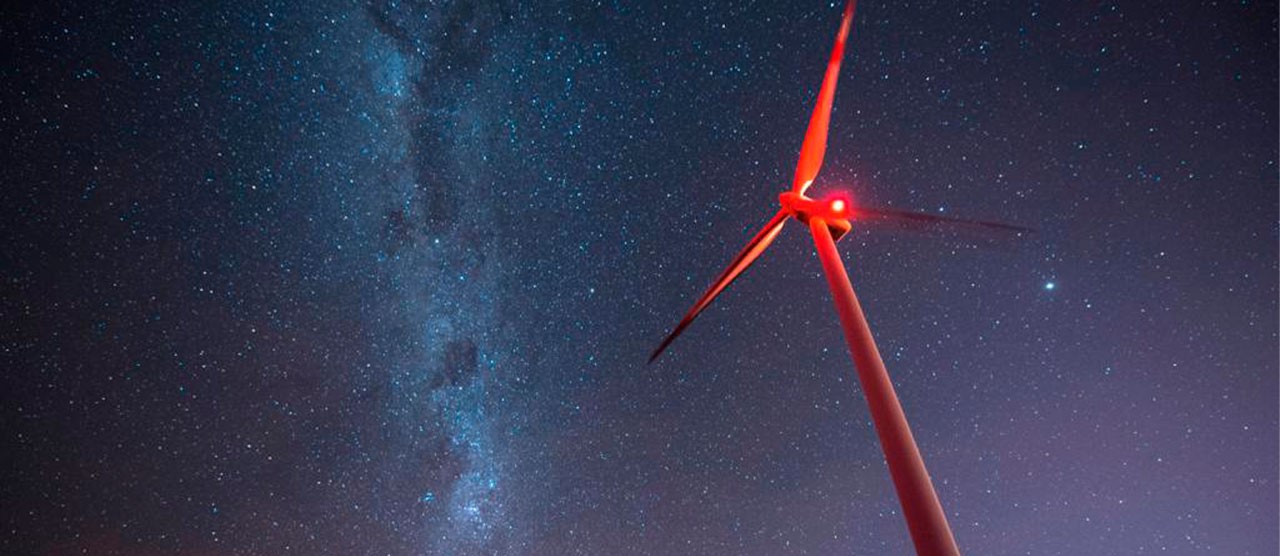“Chile's Great North: The participation of non-conventional renewable energies accumulated in the year 2020, corresponds to 19.2% of the electrical matrix. In geothermal energy, we have a potential of 3,000 MW.”
The encouraging figures even influenced Chile to take the lead at the 2019 World Climate Change Conference (COP25). Environment Minister Carolina Schmidt reported at the 2018 edition of the conference that Chile had reduced greenhouse intensity gas emissions by 9.9 percent. Bloomberg NEF's Climate scope 2018 report recognized the country as the most attractive in the world for developing renewable energy projects.
Private companies have joined in, investing in solar and wind energy to meet the ministry's new demands while becoming more competitive and allowing for lower costs. While at the same time giving the planet a break. Currently, the MW cost of an installed solar or wind power is cheaper than any other technology. The Enel Group was one of the pioneers, for example, inaugurating in 2009 the first wind farm in Chile: Canela in the Coquimbo region, a plant that Enel Green Power operates today. Thus, the so-called "non-conventional" energies became increasingly familiar.
“Norte Chico: There are several wind projects in this area. In 2009, Enel inaugurated this type of park for the first time in Canela. 7.2% of the electrical matrix in Chile corresponds to wind energy.”
Become carbon neutral by 2050
In June of last year, the Ministries of Energy and Environment announced an agreement with the private sector to implement the Electric Matrix Decarbonization Plan. The plan examines the gradual withdrawal of coal-fired power plants until Chile becomes carbon neutral by 2050, the first in Latin America to commit. As part of the project, the eight oldest coal-fired power plants will close over the next four years.
Juan Carlos Jobet, Minister of Energy, says that his portfolio's challenge is to work almost exclusively with renewable energy in 2040.
-Last year, we managed to get 44 percent of our generation to use these technologies," he says.
“Central zone: 5.8% of the energy used in Chile comes from solar photovoltaic sources. ”
Acera's Executive Director explains that it is possible to close all fossil fuel plants by 2040. He says that installing renewable energy plants would take less time than what was initially estimated by the government.
-Only under construction are about 5,000 MW, almost equivalent to the capacity already installed, which are plants that will start service in the next two years- says Finat.
According to Acera's estimates, this energy is equivalent to around 2.4 million homes' annual electricity consumption. Also, suppose hydroelectric power is also considered. In that case, it is likely that by 2025 up to 60 percent of Chile's power generation will be renewable.
Chile's commitment to renewable energy is so strong and moving fast. In May 2020, Enel asked the National Energy Commission to hurry the Bocamina plant's closing to 2022: its last coal-fired power plant, adding to the already closed Tarapacá coal-fired unit 2019.
In this regard, the general manager of Enel Chile, Paolo Pallotti, explains:
-The development of our strategy allows us to lead a fair energy transition in Chile. More than a decade ago, we began a determined path towards decarbonization. The advance of all our coal-fired plants' closure is a consequence of that medium and long-term plan. In 2022 we will be the first electric company in the country to stop generating with coal. That same year, we will have added 2,000 MW in new solar and wind plants and our geothermal plant's expansion to reach 76% of our installed capacity without emissions.
“Chile's Southern zone: Biomass is the energy obtained through turbines that move thanks to organic matter's combustion. In Chile, it has a participation of 2% of the electrical matrix.”
Sergio Versalovic, natural resources engineer and former energy authority, says that to increase electrical energy from renewable sources, Chile should develop storage methods.
-It is not easy to change coal, oil, or natural gas for wind or solar energy. The other conditions are required: to have the necessary energy vectors, such as thermal storage, hydrogen or water storage, and to be able to make the change," Versalovic says.
The pending renewable energies
When it is dark, the photovoltaic panels do not generate energy. When there is no wind, the wind turbines do not turn. Due to the high variability of these two energies, it is difficult to reach 100 percent of renewable energies only with wind and solar sources. Nevertheless, in Chile, there are more alternatives to support the already developed energy sources.
Geothermal energy is a type of renewable energy that takes advantage of the heat from the earth's core, varies less than wind or solar power. If an area has many volcanoes, as is the case in Chile, the subway heat is closer to the surface, and it is easier to harness 24 hours a day. Steam produced by the heat of the earth, as in geysers, can be transformed into electrical energy.
Although Chile has around 150 active volcanoes, geothermal energy development is slow, as its investment is risky, especially in the exploration stage. It is possible that a geothermal well is drilled and that its findings are not industrially usable. The countries that have developed it successfully, such as Iceland and New Zealand, have achieved it through state subsidies.
In the case of Chile, Cerro Pabellón did not materialize with subsidies, but through a public-private alliance between Enel Green Power Chile and ENAP. Enzo Sauma, a professor from the Universidad Catolica's Energy Center, says that although there is still much solar, wind, and hydroelectric energy to be explored, geothermal energy could be used in the future the best and developed sites for working on energy are exhausted.
-In geothermal energy, we have a potential of 3,000 MW. Giving us essential possibilities for the electrical or thermal use of this energy source invariable in climate fluctuations- adds the Minister of Energy, Juan Carlos Jobet.
Other alternatives exist, such as biomass, the energy obtained through turbines that move thanks to organic matter's combustion. Carlos Finat warns that in Chile, there are limited quantities of the resource. However, although it is not close to the wind or the sun's energy levels, Sauma says it would be good to add it.
“Southern Zone: In the southern zone of Chile, renewable energies such as the tidal power, derived from the tides, and the wave power, typical of the waves, could be explored. ”
The Marine Energy Research and Innovation Center (MERIC) is a research center financed by CORFO and private funds. For the last four years, marine energy development has been studied, particularly meromotor energy, derived from the tides, and wave energy, typical of the waves. None of them have been explored in-depth yet. The impact that the installation of these technologies has on the marine environment is still being studied.
One of MERIC's researchers, Universidad Católica Cristián Escauriza's academic, explains that a tidal current device can work similarly to a windmill but under the sea.
-You put a turbine in the ocean, and with the kinetic energy of the flow, you turn it around, and with that, you can extract energy," he says.
Escauriza also comments that tidal currents' energy is more predictable than other powers because it is produced in the channels controlled by the moon's gravitational effect. Waves, on the other hand, have more variability. Chile has potential almost all along its coast to develop marine energies.
Projections for Chilean renewables
Acera estimates that Chile's current electricity generation could be supplied 68 times over in the country using only sun, wind, and small hydro. Due to its geographical diversity, different energies can be developed in Chile, although at different scales. Opening doors to other emerging markets such as green hydrogen. Hydrogen can be used as fuel, for example, for transportation. However, producing it was too polluting.
The so-called "green hydrogen" is the result of its production using renewable energies.
Minister Jobet says that electricity production with renewable resources places Chile in "a privileged position to produce green hydrogen." Green hydrogen to export it since shipping ports are close to production sites.
Chile has the highest solar radiation globally. It has winds blowing from north to south, and almost 6.5 thousand kilometers of coastline where marine energy can be explored, adding to the mountain range's geothermal potential. The country can become carbon neutral by 2050, but to remain at the forefront of clean energy worldwide when being environmentally responsible is key to development.


